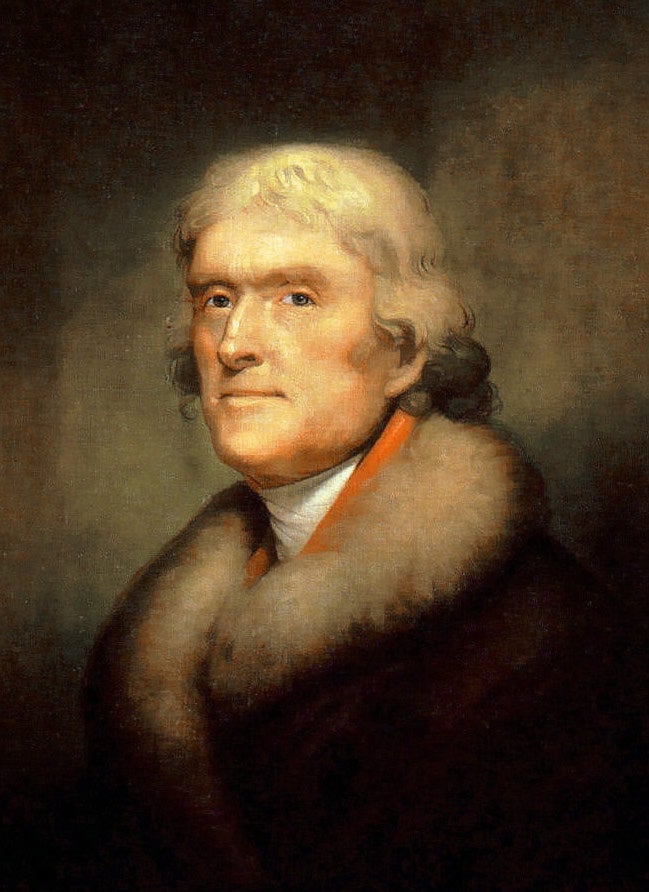
Imagine being invited to a dinner in 1819 with Thomas Jefferson, president, scientist and writer of the Declaration of Independence. Participating in a stimulating conversation with guests that he invited because he found them intriguing and interested in similar things as others at the table.
Starting from dinners we held for years in Mr. Jefferson's home, Monticello, I, and a few others, have turned these dinners into opportunities to connect people and foment discussions about many different causes and topics. As a result of the dinners, vibrant networks and passionate partners have been created for these causes. The dinners:
• Involve potential supporters (particularly high net worth philanthropists) in an interesting discussion they will find stimulating
• Enhance the dinner sponsor's reputation as a networker that listens, grows and can connect people with other interesting people and ideas
• Promote a collaborative, creative environment with a small group of people focused on a common issue
• Result in more passionate partners who are more likely to give time, talent and treasure to the cause
Here are a few ground rules that help these dinners succeed. No more than 12 to 14 people -- but no less than eight -- may attend. With a larger number the opportunity to have everyone participate is lost. One table is used to enable a single conversation, not many. There should be no individual conversation with the person seated to the left or right of you -- all conversations are with the group at the table. This ensures 12 minds focused on one discussion. Rather than having the typical conversation with the person next to you about their kids or where he or she grew up, you participate in a conversation related to your passions.
Before the dinner an email or note is sent around giving information about the people that will be attending. You can send bios if you like as well as the general topic. An opening question is included for people to be ready to discuss (for the NY Film Society we sent out the question "what is your favorite movie?"; for an education related non-profit we used "who was your favorite teacher and why?").
Start with your guests' stories
As people arrive allow time for relaxed conversation and greetings. Once the dinner guests are seated, the conversation begins when a moderator asks the question that was sent ahead of time. The guests introduce themselves and answer the opening question. These simple questions allow people to start telling a bit of their own stories and linkages start occurring around the table. The conversation then tends to roll around the table with an occasional open question, related to the common interests of the dinner guests, being thrown in. The moderator guides the conversation when necessary to make sure people are heard and recognized and that those who are loud don't dominate and those that are quiet are heard.
At the end of the dinner each person is asked to comment on the dinner and note to the group things they want to follow up on or that they were moved by. Typically the host keeps track of anything that should be followed up on (connections offered, books recommended, next meetings suggested) and assists in making them happen. There is never a formal pitch or extended presentation from the sponsor during the dinner which can always be done later. The goal is to start a discussion that will be continued in many ways in the future by the individuals present.
New relationships form
Most of these dinners go on longer than your typical dinner. During the dinners people tend to be more passionate, lively and funny. Those who are meeting each other for the first time often make sure they get contact information from their fellow guests for follow up. I have had people who were hard of hearing thank me since they could, for the first time at a dinner, hear the conversation; others who don't have English as their first language seem to like the format since it is easier to follow the conversation; and I like the dinners because, rather than half hearing a conversation because of the other conversations going around me, I (and others) can focus on one, growing, topic.
The Jeffersonian Dinner format has been used by a number of nonprofits to enhance the links between donors and advocates and potential donors and a cause. It allows the development team and executive director to identify the passions of each participant and uniquely tailor a strategy to tap the skills and interests of the donor and uncover ways to help them partner with the non-profit in its various activities. Participants tend to open up more in these dinners than at a typical function.
The true spirit of Jefferson
I feel the spirit of Mr. Jefferson in the room at each of these dinners I attend. He is listening and smiling when each person's unique passions come out and stimulate another dinner partner's thoughts. These dinners are opportunities for people to stop, listen to others and stimulate their minds and passions. Just what Mr. Jefferson would have intended!
